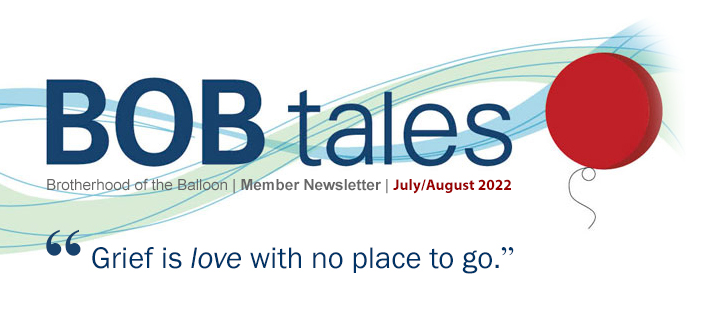
Dear Members (a note from Deb Hickey):
I’m going to start backward. I want to make sure you make it to the end of this newsletter – to our “Final Thought” section. It’s a little different this month. It’s a true story about an extraordinarily kind and gentle man who had a profound impact on both my life and my father’s. His name was David and he passed away recently, but not before touching and changing the lives of all who were privileged to know him.
I also encourage you to watch the video about David. The link is at the end of his story. I truly believe it’s no coincidence this beautiful video was made a few months before his unexpected passing.
-------------------
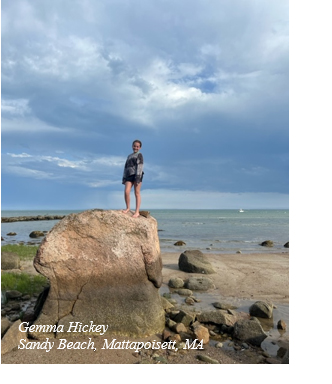 I can’t believe it’s already mid-July. By now, I hope you’ve all found time to relax, refresh, and recharge. I feel like that’s what the summer months are for!
I can’t believe it’s already mid-July. By now, I hope you’ve all found time to relax, refresh, and recharge. I feel like that’s what the summer months are for!
This season, I’m spending time at my in-laws at their home in Cape Cod as well as my parents’ home in Mattapoisett, MA.
Here is a photo of my daughter, Gemma, 11, standing atop a rock at Sandy Beach, just a short walk from my parents’ house. I have no idea how she got up there.
-------------------
In this, our two-month summer edition, we include the results of several new and important studies. The first, conducted by researchers at Loma Linda University Health, found that a higher intake of dairy – especially milk – is associated with significantly higher prostate cancer risk. The other three studies focus on the benefits of eating a plant-based diet. Results from the first study suggest a plant-based diet may lower the risk of metabolic diseases. Another study found that those who consumed an abundance of vegetables daily were a third less likely to develop liver cancer than those who ate the least number of vegetables. Researchers also suggest that eating specific vegetables may be linked to lower rates of chronic liver disease mortality. In the last study, researchers found overall meat consumption was associated with higher rates of gastric cancer.
This month we also include a sad example of why it’s so important to get your annual physical, which includes a PSA test. And finally, we share yet another important reason to keep your weight in check.
As always, we love to get feedback on the newsletter, and welcome any suggestions you have on how to improve the value of the BOB Tales to our members. Just send an email to [email protected].
Deb Hickey
To print the BOB Tales newsletter or view the newsletter with a larger font size, click here for the PDF file. .jpg)
.jpg)
In This Issue:
- Milk Consumption Associated with Significantly Higher Prostate Cancer Risk
- The Importance of Annual Physicals
- Another Reason to Keep Your Weight Down
- Vegans at Lower Risk for Chronic Diseases
- Two More Studies Reveal Benefits of Eating a Plant-based Diet
Milk Consumption Associated with Significantly Higher Prostate Cancer Risk
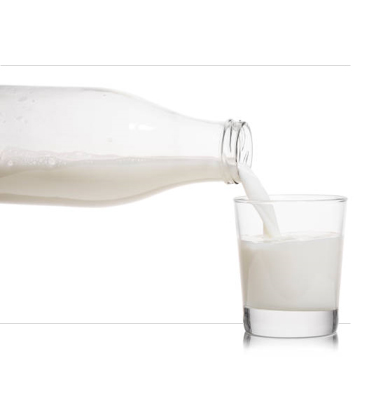 A comprehensive study that evaluated dietary intakes of more than 28,000 North American men was conducted by researchers at Loma Linda University Health. The study found that men with higher intakes of dairy foods, especially milk, were at “significantly higher risk of prostate cancer compared to men with lower intakes.”
A comprehensive study that evaluated dietary intakes of more than 28,000 North American men was conducted by researchers at Loma Linda University Health. The study found that men with higher intakes of dairy foods, especially milk, were at “significantly higher risk of prostate cancer compared to men with lower intakes.”
Men who consumed about 1 ¾ cups of milk per day faced a 25 percent higher risk than men who consumed a half a cup of milk per week, and “an even greater increased risk when compared to men with zero dairy intake in their diets.
And, surprisingly, it didn’t seem to matter whether it was whole milk, reduced-fat milk, or even nonfat milk. Another interesting observation from the study was that there didn’t appear to be any important associations with cheese or yogurt consumption.
The study specifically ruled out calcium as a contributor to the problem, suggesting that something else in milk was contributing to the increased prostate cancer risk.
And women are not immune to the effects of milk. “The parallels between our breast cancer in women paper a year ago and this paper relating to men are striking,” said Gary Fraser, MBChB, PhD, the study’s principal investigator and professor at Loma Linda University School of Medicine. “It seems possible that the same biological mechanisms are at work.” The primary contributing factor “might be the sex hormone content of dairy milk.” Prostate cancer is a hormone-responsive cancer, and up to 75 percent of lactating (milk-producing) dairy cows are pregnant.
You may recall in our March 2022 BOB Tales, we began a series of articles based on the book, How Not To Die by Dr. Michael Greger. The first article was based on his chapter, “How Not to Die from Prostate Cancer.” In that article we noted that Dr. Greger pointed out, “Humans are the only species who drink milk after weaning. It also seems a bit unnatural to drink the milk of another species.”
We further noted that milk, often from genetically “improved” cows, contains sex steroid hormones, like estrogen. Dr. Greger wrote, “Mother nature designed cow’s milk to put a few hundred pounds on a baby calf within a few months.” He later wrote, “It’s easy to see how these factors can be connected to certain cancers.”
We also mentioned in the March article that laboratory experiments showed that cow’s milk stimulated growth of prostate cancer in a petri dish, while almond milk, for example, suppressed prostate cancer growth.
We think the researchers at Loma Linda University Health are on to something important. And while researchers cannot say conclusively that milk causes prostate cancer, the evidence clearly shows that milk consumption puts men at much higher risk of being diagnosed with the disease.

The Importance of Annual Physicals
A gentleman recently asked us whether proton therapy was the best treatment option for his prostate cancer. After reminding him that we’re not physicians and can’t give medical advice, only our opinion, we asked the “usual” questions about age, PSA, Gleason score, T-staging, imaging testing that’s been done, etc.
He told us his PSA is 215, his Gleason score is 5+4=9, and his T-staging is T3c. The man was suffering from stage 4 cancer with multiple metastatic sites in his skeletal system.
After explaining that proton therapy is considered to be an excellent treatment option for localized prostate cancer, and his cancer isn’t localized, we told him that proton doesn’t seem to be a viable treatment option in his case.
We also asked how his PSA had gotten so high before he was biopsied, and he responded, “I’d never had a PSA test before.”
It isn’t necessary to share any more of the conversation. What’s so unfortunate is that this isn’t the first time we’ve heard a story like this. In fact, there are several examples in Bob’s new book.
It’s hard to believe that some men aren’t having annual physicals. It’s even harder to believe that many of those who are having physicals aren’t having their PSA measured. It’s a simple, low-cost test and it can save your life.
Catching prostate cancer early permits you to choose from numerous treatment options, most of which would be successful in destroying your cancer, allowing you to get on with your life.
Getting diagnosed with late-stage disease greatly diminishes your treatment options, your chances of survival, and the quality of your remaining life. So, do your male friends and family members a favor – encourage them to have annual physicals and ask for a PSA test.
We’ve been producing BOB Tales newsletters for more than 20 years. During this time there have been articles that many new members haven’t seen, and some older members may have forgotten. So, we periodically re-run articles from past newsletters. The following is from February 2007.
Another Reason to Keep Your Weight Down
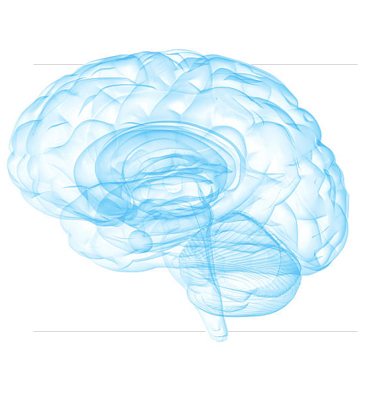 Want to keep your brain razor sharp for years to come? Just say no to middle-age spread, according to [email protected]. When it comes to memory and concentration, it may pay to practice waist control. Packing on extra pounds can slow not only your time in the 50-yard dash but also your ability to remember things and stay focused.
Want to keep your brain razor sharp for years to come? Just say no to middle-age spread, according to [email protected]. When it comes to memory and concentration, it may pay to practice waist control. Packing on extra pounds can slow not only your time in the 50-yard dash but also your ability to remember things and stay focused.
Obesity and declines in both memory and attention span have long been linked to old age, but new research has found the same relationship in 30-somethings, too. And the slowdown gets worse over time.
A large study tested 2,223 adults, ranging in age from 32 to 62, to see how their weight affected four measures of cognitive function. Five years later, the researchers tested them again.
Those who were seriously overweight – with a body mass index (BMI) over 30 – did poorly on the first round of testing. Worse, their mental abilities declined even more at the five-year mark. Why? One theory faults leptin, a protein secreted by stored fat; high leptin levels may affect learning and memory. Another theory is that the brain is harmed by cardiovascular disease, which is commonly associated with high BMIs.
Although you don’t need six-pack abs or a bikini-worthy waist to stay sharp and age healthfully, obesity isn’t a viable alternative. Join a health club; do whatever it takes. Do it not just for your body, but also for your brain!

Member Feedback
I was 69 years old and had Gleason 9 prostate cancer. My urologist strongly encouraged me not to have proton therapy. But I went ahead anyway. That was 2011. Today he tells me I’m his most successful prostate cancer patient. I told him that the next time someone tells him he’s interested in proton therapy, he should remember me.
My proton therapy is the closest thing to a miracle I’ve witnessed since the birth of my children.
─ BOB Member, South Pasadena, FL
I was treated for Gleason 7 prostate cancer at Loma Linda 12 years ago. Some years later, I lost my wife of 40 years. Life was hard for a long time. Then at age 84, I met a wonderful lady – much younger than I – and we’re getting married in September.
The beauty of proton therapy is that everything “down there” still works and she and I will be able to have a normal sex life. Needless to say, I thank the Lord every day for my proton treatments. I can only imagine what life would be like if I had chosen surgery.
─ BOB Member, El Paso, TX
Your “How Not to Die” sections in the newsletter prompted me to change my eating habits. In March, I weighed 221 pounds. I’m now below 190. My cholesterol was 220 and now it’s 180. My blood sugar has also improved.
─ BOB Member, Murrieta, CA
I was treated with protons in 2010 at the University of Florida, Jacksonville. Two years after that, I completed my first Ironman Triathlon in New York. A few years later, I ran the New York City Marathon. I also ran the Boston Marathon three times. In my “free time,” I go to Sebring where I belong to the Porsche Club as a driver and instructor.
I’m happy to tell anyone that’s willing to listen about proton therapy, Bob Marckini’s book, and the BOB organization. Thank you for all you do!
─ BOB Member, South Pasadena, FL

Bob and Deb's Reasons for Giving
We BOB members would never have had the opportunity to receive proton therapy if others hadn’t given before us. I make an end-of-year gift annually and I’m including a bequest in my estate plan to support the Robert J. Marckini Chair for Proton Therapy Research at Loma Linda University Health.
―Bob Marckini
I donate yearly to proton therapy research at Loma Linda and I’ve also placed Loma Linda University Health in my estate plan. My reason is simple: Loma Linda pioneered the technology that saved my father’s life and allowed him to maintain his quality of life. I’ve not only enjoyed 22 more years (and counting) with him because of this, I’ve had – and continue to have – the amazing opportunity to work alongside my dad, running his “ministry,” the Brotherhood of the Balloon. Together, we’ve calmed the fears of many families; led thousands of men to proton therapy for their prostate cancer; educated countless others about prostate cancer, proton therapy, and other important health-related topics, and grown closer through all of it. I’m truly honored to be able to help support Loma Linda’s critical, life-saving research.
―Deb Hickey
Giving Options
|
|
|
.jpg)

Vegans at Lower Risk for Chronic Diseases
 In a recent study, researchers found vegans had lower concentrations of metabolites in their blood plasma than meat eaters. These metabolites appear to be associated with cardiovascular disease, high blood glucose, and inflammation. The findings suggest that eating primarily plant-based foods may lower the risk of metabolic diseases such as heart disease, stroke, and Type 2 diabetes.
In a recent study, researchers found vegans had lower concentrations of metabolites in their blood plasma than meat eaters. These metabolites appear to be associated with cardiovascular disease, high blood glucose, and inflammation. The findings suggest that eating primarily plant-based foods may lower the risk of metabolic diseases such as heart disease, stroke, and Type 2 diabetes.
Researchers at Loma Linda University, Brigham and Women’s Hospital, and Fred Hutchinson Cancer Research Center studied metabolic signatures – 67 metabolites produced in the process of metabolism that circulate in the bloodstream – in 93 study participants. They found the metabolic profiles of vegans to be notably different than those of meat eaters. In fact, more than 60 percent of nearly 1,000 biomarkers showed significant differences.
Researchers hope to apply this research on a larger scale to identify metabolic and genomic biomarkers that link diet and lifestyle to cardiometabolic and other diseases, with a focus on addressing health disparities.


Two More Studies Reveal Benefits of Eating Plant-based Diet
A pair of new studies has provided more evidence that eating an abundance of vegetables is associated with a lower risk of certain cancers, while the consumption of red meat is associated with a higher risk. Both studies were recently released at the annual meeting of the American Association for Cancer Research.
Vegetable Intake May Lower Risk of Liver Cancer
For the NIH-AARP Diet and Health Study, researchers mailed 3.5 million questionnaires to AARP members, age 50-71, during 1995 and 1996. The questionnaire included dietary section and lifestyle questions. More than 500,000 people responded, making this the largest study of diet and health ever conducted.
Follow-up surveys included questions about physical activity, cancer screenings, diet, body size, medication use, other health diagnoses, and family medical issues and history of cancer. Investigators also referenced several other resources to complete the study.
Over a median follow-up of 15.5 years, 899 developed liver cancer, and 934 died of chronic liver disease. Researchers found those who consumed the most vegetables (3.7 cups daily on average) were a third less likely to develop liver cancer than those who ate the least amount (1.0 cups daily on average).
There were several types of vegetables that seemed to be the strongest cancer fighters: cruciferous (broccoli, cauliflower, kale), lettuce, legumes, and carrots. These vegetables were also linked to lower rates of chronic liver disease mortality.
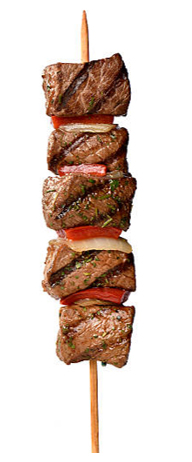 Meat Consumption May Increase Risk of Gastric Cancer
Meat Consumption May Increase Risk of Gastric Cancer
Researchers examined data from the Golestan Cohort Study – a prospective study examining risk factors for esophageal cancer in Golestan Province, Iran. They tracked 50,045 people, aged 40-75, from the northeastern part of the country where the disease is prevalent.
Red meat consumption is somewhat rare in the region, as residents typically prefer chicken, according to the study’s lead author, Giulia Collatuzzo, MD. On average, participants reported eating 18.4 grams daily of red meat and 72.1 grams daily of white meat.
Participants were tracked for about 12 years. During this time, 369 developed esophageal cancer and 368 developed gastric cancer.
Red meat was linked to more esophageal cancer in women only. The lack of a larger connection between red meat consumption and esophageal cancer may be due to the fact that meat passes through the esophagus only temporarily, said Dr. Collatuzzo.
Overall red meat consumption was associated with higher rates of gastric cancer. Dr. Collatuzzo said the findings suggest that those in the group who consumed the most red meat may have an average 25 percent increased risk in developing gastric cancer than those in the group who consumed the least amount of red meat.

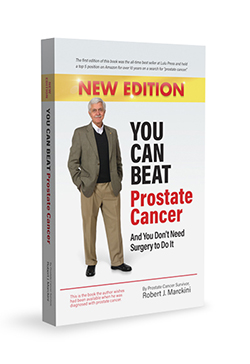 You Can Beat Prostate Cancer: And You Don’t Need Surgery to Do It –Second Edition
You Can Beat Prostate Cancer: And You Don’t Need Surgery to Do It –Second Edition
The Audiobook
The audio version of Bob’s book is available on Amazon, iTunes, Walmart, Nook, Blinkist, Scribd, Kobo, Hoopla, Google Audiobooks, and 37 other platforms. Interest in the audiobook is growing rapidly, perhaps because Bob narrated the book himself and he can place emphasis on the most important issues; and also is able to show his passion for the superiority and benefits of proton therapy.
More and more people are listening to books instead of reading them. The audio version of Bob’s book is much less expensive than the print version and is free to those with Amazon Audible subscriptions. Even if you already have a print version, we recommend listening to Bob narrate his audiobook. You can download it to your phone and listen in your car.
If you’d like to hear a new five-minute segment of the book, click here. This is the audio sample, which is available on the Amazon website as well as the websites for all 43 audiobook distributors.
If you’ve listened to the audio version, please let us know what you think. Send an email to Deb at [email protected].


Step 9 in the 10 Steps
Based on reader feedback, the most popular part of Bob’s book has been Chapter 18 where he outlines the 10 steps for taking control of the detection and treatment of your prostate cancer. Over the past few months, we’ve excerpted segments from the first eight steps in our monthly BOB Tales. Following is Step 9:
Choose from Among the Best Practitioners and Treatment Centers
One gentleman from Canada told me he was considering brachytherapy with a local physician. I asked him how many procedures his doctor had performed. He told me he’d check. When he called back, he told me, “She’s done six.” I said, “Six per day or per week?” He said, “No, six in total.” My response was, “Why not let her practice on someone else?”
There are significant variations in the results being seen by different doctors and hospitals around the world, both in terms of disease-free survival and side effects for the same procedure. You owe it to yourself to find out about these differences and to pick a doctor and hospital that have demonstrated the best results. If this means traveling a long distance, then so be it. What’s the price of maintaining your potency or bladder control? Certainly, the inconvenience or additional cost of some travel should be worth the benefit of improving your chances of disease-free survival and quality of life after treatment.
If you’re considering DaVinci laparoscopic robotic surgery, for example, keep this statistic in mind: Dr. Prasanna Sooriakumaran, a urologist and researcher at the Weill Cornell Medical College in New York, published an article in Bloomberg News reporting that, “Doctors who perform robotic-assisted prostate cancer surgery aren’t proficient and able to remove all the malignant cells surrounding the tumor until they have done the procedure more than 1,600 times.”
Your primary objective is disease-free survival, and close behind is quality of life after treatment. You have a significantly better chance of achieving both of these goals if you 1) choose a doctor with excellent credentials, reputation and considerable experience, and 2) select a highly ranked treatment facility with a proven track record.


Did you find Bob’s new book helpful?
If Bob’s book was helpful to you and you’d like to help others find it on Amazon, please write a review. Every single review contributes to the credibility and visibility of this book.
We are happy to discount books in quantity to anyone who is interested in spreading the word on proton therapy. Just send an email to [email protected].
Proceeds from book sales are used to help fund our efforts and to support proton therapy research.



Last Month’s Brain Teaser
The human body is made up of about 10 trillion cells. Approximately how many cells are there in an egg yolk?
Answer: Exactly one.
Winner: The winner is a member from Thousand Oaks, CA who wishes to remain anonymous.
.jpg)
.jpg)
New Brain Teaser
You can solve this with high school math: Say you have a tank that measures one cubic mile in dimensions, and it’s filled with water. Next, you release the water at the rate of 1,000 gallons a minute. About how long would it take to drain the entire tank?
| a. 2 weeks | d. 20 years |
| b. 2- weeks | e. 200 years |
| c. 2 years | f. 2,000 years |
Send your brain teaser answer to [email protected] for a chance to win a signed copy of Bob Marckini’s NEW second edition book, You Can Beat Prostate Cancer.
Random Thoughts
|
|
|
|
|
|
|
|
|


Oops
A young ensign is working late at the Pentagon one evening. As he clocks out of his office at about 8 p.m., he sees the admiral standing by the classified document shredder in the hallway, a piece of paper in his hand.
“Do you know how to work this thing?” the admiral asks. “My secretary’s gone home and I don’t know how to run it.”
“Yes, sir,” says the young ensign, who turns on the machine, takes the paper from the admiral, and feeds it in.
“Thanks,” says the admiral, “I just need one copy …”![]()


The Human Skeletal System
Watch this 8-minute video. It’s amazing how complex our bone structure is and what an incredible creation the human body is. And, also, with so many interconnected parts, it’s truly amazing that we don’t have a lot more aches and pains than we do.
Estate Planning Hints
BOB Member Ron Hendricks is Director, US Foundation for Trinity Western University. He regularly copies us on his “News from Ron” mailings, which are helpful hints on estate planning to the readers of his newsletters. We have found Ron’s suggestions to be timely and beneficial. With his permission we periodically share some of his wisdom with our membership. This segment is called …
Where Are They?
Should Medical Papers and a Living Will be kept in your safety deposit box? No, as they need to be very accessible. If you are ill and in the hospital, the durable power of attorney for healthcare or advance healthcare directive will need to be available to your chosen power of attorney. They may not have access to your safety deposit box. Your healthcare powers should be given to a friend or adviser so they are available if you are in the hospital and need their assistance.
Is it important to express your preferences on end-of-life care through an advance directive or living will? Yes, it is very important that you make these choices while you are coherent. While the states may use different forms and have a different name for the document, all permit you to express your healthcare preferences for end of life.
Is a family member who lives in your area a good choice for your healthcare agent? While you can select any person who lives near or far as your healthcare agent, it is helpful to select a person who is in the area so that he or she is available if you need an immediate healthcare decision.
Will your personal preferences on pain management have substantial impact on your end-of-life care? If you desire a high comfort level even though that leads to less mental clarity or prefer a more moderate or even low comfort level with greater mental clarity, that will have great impact on the level of pain medication provided to you.
Did You Know? (Source)
The military salute is a motion that evolved from medieval times, when knights in armor raised their visors to reveal their identity.
If you get into the bottom of a well or a tall chimney and look up, you can see stars, even in the middle of the day.
When a person dies, hearing is the last sense to go. The first sense lost is sight.
The earth gets 100 tons heavier every day due to falling space dust.
Due to earth’s gravity, it’s impossible for mountains to be higher than 15,000 meters (about 50,000 feet).
.jpg)
.jpg)
Quote of the Month:
“Happiness always looks small while you hold it in your hands, but let it go, and you learn at once how big and precious it is.” – Maxim Gorky



Love Thy Neighbor — Remembering David Colwell
By Bob Marckini
I read the Bible every morning, just a chapter or two. I’ve found it’s a great way to start the day and help put life’s challenges in proper perspective. A common message throughout the Old and New Testaments is to “love thy neighbor.” It’s in the book of Leviticus in the Old Testament, it’s one of the commandments Jesus gave, and it’s found throughout the Gospels of the New Testament.
Having been affiliated with Loma Linda University Health (LLUH) for more than 20 years, I’ve seen firsthand how the wonderful people there put the words, “love thy neighbor,” into practice every day in the way they treat their patients, their employees, and each other. It’s part of their fabric and it’s one of the things that drew me to them while I was researching prostate cancer treatment options 22 years ago.
Shortly after my treatment at Loma Linda ended in late 2000, I was invited by Dr. J. Lynn Martell to join the International Proton Advisory Council at Loma Linda University Health. It was through this affiliation that I first met David Colwell who worked in media ministries and philanthropy.
I could tell immediately that David was a kind and gentle soul – you could see it in his eyes and in his smile. You could hear it in his quiet voice. I would later learn how deeply humble and truly extraordinary David really was.
Over the years as my relationship with Loma Linda grew, I found myself relying on David in many ways for help on just about anything. He never said no; he always had a solution; he always handled my requests with results better than I expected; and he always had a smile on his face. Always.
Even though David had more important responsibilities in his advancing career, he was the “go-to” guy for me and many others on any issue where help was needed. This included requests from patients in treatment, all the way up to the LLUH CEO. David seemed to know everyone, everything, and every system at LLUH.
When I’d travel to LLUH for Advisory Council meetings or visits to my oncologist for periodic check-ups, I’d speak at the Wednesday night support group meetings. A call to David was all that was needed to ensure I had a time slot to speak. A notice would go out to patients; the audio, video, and sound systems would be set up with the PowerPoint loaded in and working; and everything else would be put in place for a seamless and memorable presentation. David always showed up for the meetings and always stayed until the end, often past 8:00 pm.
David’s responsibilities were far greater than those administrative tasks, but that’s what made him so special. No job was too big or too small. If it needed to be done, he’d find a way to do it.
Over the years, I learned that David was a person of strong faith. I also learned that at a young age when most intelligent, educated young men were dating and planning the next phase of their lives, David befriended three children from an unstable family that lived next door to him. The children were friendly and inquisitive, and they expressed an interest in the Seventh-day Adventist Church where David worshiped. He volunteered to take the children to services on the Sabbath and to make them lunch. This became a weekly routine and his connection with and affection for the children grew.
Sometime later, David adopted these children, nurtured them, and brought them up in the faith they were so attracted to. They grew and matured, married, had children of their own, and the family grew larger.
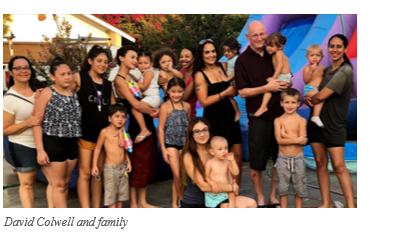 David always put his children and his new family first, even while working a full-time job with significant responsibilities. He never allowed himself much of a social life; he always seemed too busy caring for his children, and then grandchildren and eventually, great-grandchildren. The family eventually totaled 21.
David always put his children and his new family first, even while working a full-time job with significant responsibilities. He never allowed himself much of a social life; he always seemed too busy caring for his children, and then grandchildren and eventually, great-grandchildren. The family eventually totaled 21.
Despite a major heart attack and serious cancer diagnosis, David continued to put his family first … until his passing last March. To the heartbreak of everyone who knew and loved him, David passed away at just 62 years old.
“Love thy neighbor.” It’s easy to love people who love you back, but that’s not what the Scriptures tell us to do. The hard part is loving and caring for people you don’t know, or barely know. David reached out to three needy children. He gave them everything he had. Mostly, he gave them his love.
If you’re lucky – and I mean like winning the lottery lucky – you’ll meet an extraordinary human being like David, who is totally and unconditionally loving, giving, and selfless; someone who’ll always put others first; always choose to do what’s right, regardless of the consequences or personal sacrifice required; and always make you feel good whenever you’re around him.
David Colwell was that person in my life. He was the closest thing to a living saint I’ve ever met.
Shortly before his untimely death, Loma Linda University Health honored David by producing a short video.
I think it’s exceptionally well done and believe by watching it, you’ll be able to get a glimpse into the extraordinary person he was.
Dr. Richard Hart, President of Loma Linda University Health, gave a touching speech at David’s memorial service. “Grief is love with no place to go,” he said. “And that’s what we’ll all feel for a while … but he’ll be remembered with love.
One of my favorite saints is Anthony of Padua, a young Portuguese Franciscan priest, an extraordinary preacher, known for his expert knowledge of Scripture, and his undying love and devotion to the poor, the sick, and the underprivileged. St. Anthony used to say, “Two things, love of God and love of neighbor, make man perfect.” This was David Colwell.
Rest in peace, my friend.
Low PSAs to all,
Bob Marckini and Deb Hickey
To print the BOB Tales newsletter or view the newsletter with a larger font size, click here for the PDF file.
NO MEDICAL ADVICE: Material appearing here represents opinions offered by non-medically-trained laypersons. Comments shown here should NEVER be interpreted as specific medical advice and must be used only as background information when consulting with a qualified medical professional.


